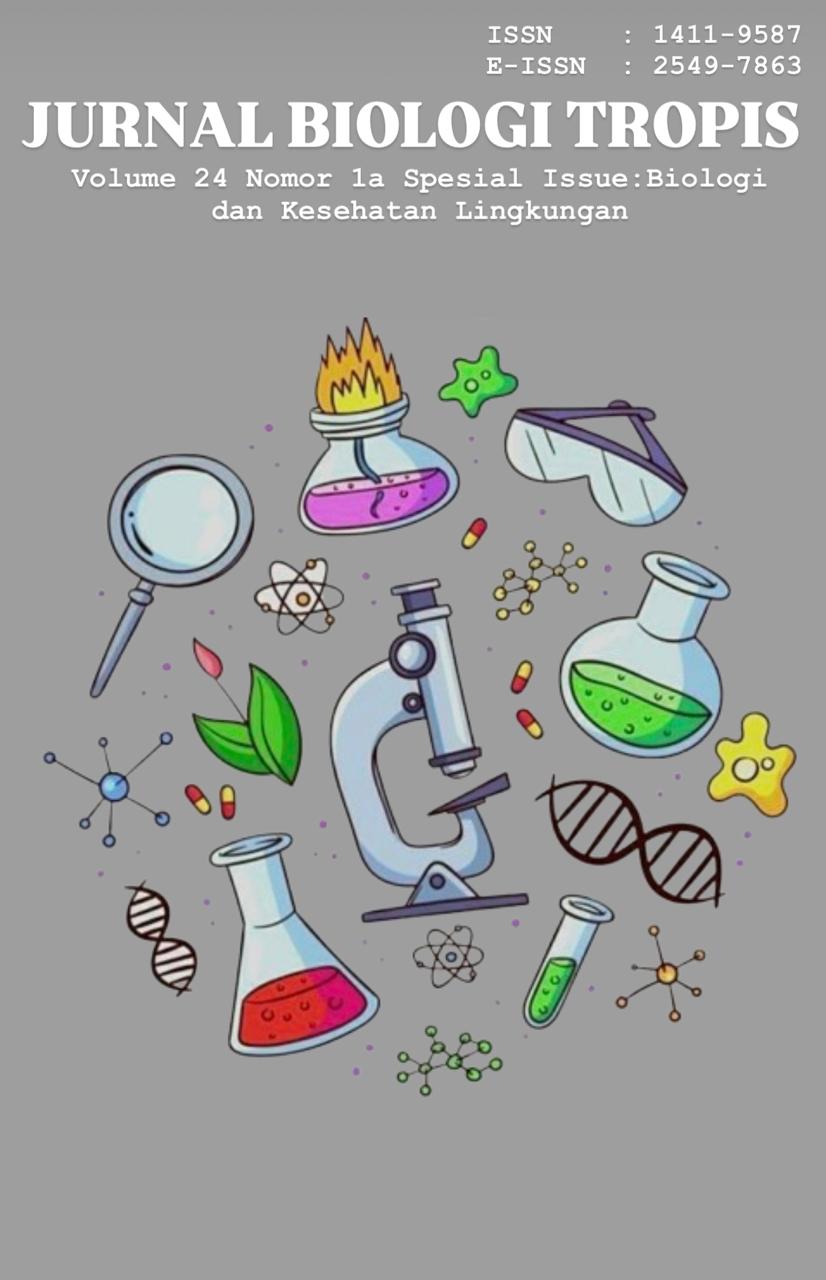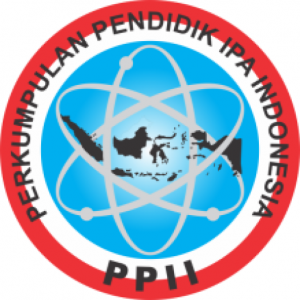Biopriming with Trichoderma spp. as a Strategy to Enhance Seed Viability and Vigor in Several Rice Varieties (Oryza sativa L.)
Authors
Maria Serviana Due , David Januarius Djawapatty , Ludgardis Keas Nosen , Jenny Ronawati Bay , Antonia Paulina Bao , Nataniel Umbu LimbuDOI:
10.29303/jbt.v24i1b.8049Published:
2024-12-26Issue:
Vol. 24 No. 1b (2024): Special IssueArticles
Downloads
How to Cite
Downloads
Metrics
Abstract
Rice plants frequently encounter both biotic and abiotic stress because the nation is tropical. Through the application of ecologically friendly technology, the sustainability of diminishing rice production can be addressed. Trichoderma spp. microorganisms used in biopriming may be able to address the issues that come up. The purpose of the research is to determine how bio priming using Trichoderma spp. affects the viability and vigor of seeds from several rice varieties. (Oryza sativa L.). This study employs an experimental approach with a Completely Randomized approach (CRD) factorial design that includes two factors: the rice variety and the concentration of Trichoderma spp. Two-way analysis of variance (ANOVA) was used to analyze the data. The findings of the study show that seed vigor and viability are significantly impacted by biopriming with Trichoderma spp. For the Kusuma 05 rice variety, the treatment with Trichoderma spp. at a 30% concentration showed the largest increase in each variable.
References
Ananthi, M., Selvaraju, P., & Sundralingam, K. (2014). Effect of bio-priming using bio-control agents on seed germination and seedling vigour in chili (Capsicum annum L.) ‘PKM 1’. The Journal of Horticultural Science and Biotechnology, 89(5): 564-568. DOI: https://www.researchgate.net/publication/289182132_Effect_of_bio priming_using_bio-control_agents_on_seed_germination_and_seedling_vigour_in_chilli_Capsicu annuum_L_'PKM_1'.
Badan Pusat Statistik. (2023). Luas Panen dan Produksi Padi di Indonesia 2023. Jakarta: Badan Pusat Statistik. DOI: https://www.bps.go.id/id/pressrelease/2024/03/01/2375/pada-2023--luas-panen-padi-mencapai-sekitar-10-21-juta-hektare-dengan-produksi-padi-sebesar-53-98-juta-ton-gabah-kering-giling--gkg-.html.
Badan Pusat Statistik. (2023). Proyeksi Penduduk Indonesia 2020-2050 Hasil Sensus Penduduk 2020. Jakarta: Badan Pusat Statistik. DOI: https://www.bps.go.id/id/publication/2023/05/16/fad83131cd3bb9be3bb2a657/proyeksi-penduduk-indonesia-2020-2050-hasil-sensus-penduduk-2020.html.
Devi, K. S., Devi, P. S., Sinha, B., Singh, L. N. K., Chanu, W. T., Maibam, N., & Devi, H. C. (2019). Effects of bio priming of rice seeds with native Trichoderma spp. isolated from rice rhizospheric soil. Journal of Pharmacognosy and Phytochemistry, 8(4): 1968-1971. DOI: https://www.phytojournal.com/archives/2019/vol8issue4/PartAG/8-4-348-845.pdf.
Dhawal, S., Ranjan, S. D., Singh, Y. R., Manoj, P., & Amitava, R. (2016). Bio-priming with Arbuscular mycorrizae for Addressing Soil Fertility with Special Reference to Phosphorus. International Journal of Bioresource Science, 3(2): 35-40. DOI: https://www.researchgate.net/publication/317607698_Bio-priming_with_Arbuscular_mycorrhizae_for_Addressing_Soil_Fertility_with_Special_Reference_to_Phosphorus.
Eze, Remigius C., Akinbile, Christopher O., Ewulo, Babatunde S., & Abolude, Akintayo T. (2022). Effect of Biochar Concentrations and Fertilizer Types on Drip-Irrigated Upland Rice Performance. Journal of Rice Research and Developments, 5(2): 402-415. DOI: https://www.researchgate.net/publication/364365739_Effects_of_Biochar_Concentrations_and_Fertilizer_Types_on_Drip-Irrigated_Upland_Rice_Performance.
Khan, M.H., Dar, Z.A and Dar, S.A. (2015). Breeding Strategies for Improving Rice Yield-A Review. Agricultural Sciences, 6(5): 467-478. DOI: https://www.scirp.org/pdf/as_2015052219490535.pdf.
Khan, Naeem., Ali, Shahid., Shahid, M. A., Mustafa, Adnan., Sayyed, R. Z., & Cura, J. A. (2021). Insights into the Interactions among Roots, Rhizosphere, and Rhizobacteria for Improving Plant Growth and Tolerance to Abiotic Stresses: A Review. Cells, 10(6): 1-16. DOI: https://www.mdpi.com/2073-4409/10/6/1551.
Kumar, S. (2014). Plant Disease Management in India: Advances and Challenges. African Journal of Agricultural Reseacrh, 9(15): 1207-1217. DOI: https://academicjournals.org/article/article1397575144_Kumar.pdf.
Mahmood, A., Turgay, O. C., Farooq, M., & Hayat, R. (2016). Seed biopriming with plant growth promoting rhizobacteria: a review. FEMS Microbiology Ecology, 92(8): 112. DOI: https://watermark.silverchair.com/fiw112.pdf.
Mastouri, F., Bjorkman, T., & Harman, G. E. (2010). Seed Treatmentwith Trichoderma harzianum alleviates biotic, abiotic, and physiological stresses in germinating seeds and seedlings. Phytopathology, 100(11): 1213-1221. DOI: https://apsjournals.apsnet.org/doi/epdf/10.1094/PHYTO-03-10-0091.
Miljakovic, D., Marinkovic, J., Tamindzic, G., Dordevic, Vuk., Tintor, B., Milosevic, D., Ignjatov, M., & Nikolic, Z. (2022). Bio-priming of soybean with Bradyrhizobium japonicum and Bacillus megaterium: Strategy to Improve Seed Germination and the Initial Seedling Growth, 11(15): 1-15. DOI: https://www.mdpi.com/2223-7747/11/15/1927.
Mitra, D., Mondal, R., Khoshru, B., Shadangi, S., Mohapatra, P. K. D., & Panneerselvam, P. (2021). Rhizobacteria mediated seed bio-priming triggers the resistance and plant growth for sustainable crop production. Current Research in Microbial Sciences, 2, 100071. DOI: https://pmc.ncbi.nlm.nih.gov/articles/PMC8610296/.
Paparella, S., Araujo, S. S., Rossi, G., Wijayasinghe, M., Carbonera, D., & Balestrazzi, A. (2015). Seed priming: State of the art and new Perspectives. Plant Cell Reports, 34(8): 1281-1293. DOI: https://link.springer.com/article/10.1007/s00299-015-1784-y.
Polaiah, AC., Parthvee, RD., Manjesh, GN., Thondaiman, V., & Shivakumara, KT. (2020). Effect of presowing seed treatments on seed germination and seedling growrh of sandalwood (Santalum album L.). International Journal of Chemical Studies, 8(4): 1541-1545. DOI: https://www.researchgate.net/publication/343231147_Effect_of_presowing_seed_treatments_on_seed_germination_and_seedling_growth_of_sandalwood_Santalum_album_L.
Rahmad., Asrul. L., Kuswinanti, T., & Musa, Y. (2020). Isolation of Fungi Producing Hormone Indole Acetic Acid (IAA) on Sugarcane Bagasse and Filter Cake. IOP Conference Series: Earth and Environmental Science. DOI: https://iopscience.iop.org/article/10.1088/1755-1315/486/1/012131/pdf.
Rahmad., Nurmiaty., & Ridwan, Andi. (2023). Effect of Concentration of Biopriming With Trichoderma harzianum on Viability and Vigor of Rice Seeds. Jurnal Agroplantae, 12(1): 82-91. DOI: https://www.researchgate.net/publication/369729646_Pengaruh_Konsentrasi_Biopriming_dengan_Trichoderma_Harzianum_terhadap_Viabilitas_dan_Vigor_Benih_Padi.
Ramadhani, S., Kurniawan, T., & Ulim, M.A. (2018). Perlakuan Biopriming Kombinasi Ekstrak Tomat dan Trichoderma spp. Terhadap Viabilitas dan Vigor Benih Terung (Solanum melongena L.) kadaluarsa. Jurnal Ilmiah Mahasiswa Pertanian Unsyiah, 3(2): 80-89. DOI: https://jim.usk.ac.id/JFP/article/view/7493/6585.
Rakhsit, A., Sunita, K., Pal, S., Singh, A., & Singh, H. B. (2015). Bio-priming Mediated Nutrient Use Efficiency of Crop Species. Springer, New Delhi, pp. 181-191. DOI: https://www.researchgate.net/publication/283174162_Bio-priming_Mediated_Nutrient_Use_Efficiency_of_Crop_Species.
Sadjad, S. (1993). Dari Benih Kepada Benih. Jakarta: Grasindo Persada.
Satria, Bima., Harahap, E. M., & Jamilah. (2017). Peningkatan Produktivitas Padi Sawah (Oryza sativa L.) Melalui Penerapan Beberapa Jarak Tanam dan Sistem Tanam. Jurnal Agroekoteknologi FP USU, 5(3): 629-637. DOI: https://talenta.usu.ac.id/joa/article/view/2228/1625.
Suhendra, D., Nisa, T.C., & Hanafiah, D.S. (2016). Efek Konsentrasi GA3 dan Lama Perendaman pad Berbagai Pembelahan Terhadap Perkecambahan Benih Manggis (Garcinia mangostana L.) Pertanian Tropik, 3(3): 238-248. DOI: https://www.neliti.com/id/publications/158496/efek-konsentrasi-hormon-giberelin-ga3-dan-lama-perendaman-pada-berbagai-pembelah.
Toribio, A. J., Jurado, M. M., Estrella, F. S., Lopez, M. J., Lopez-Gonzales, J. A., & Moreno, J. (2021). Seed biopriming with cyanobacterial extracts as an eco-friendly strategy to control damping off caused by Pythium ultimum in seedbeds. Mikrobiological Research, 248 (2021) 126766. DOI: https://pdf.sciencedirectassets.com/273181/1-s2.0-S0944501321X00043/1-s2.0-S0944501321000720/main.pdf.
Woo, S. L., Ruocco, M., Vinale, F., Nigro, M., Marra, R., Lombardi, N., Pascale, A., Lanzuise, S., Manganiello, G., & Lorito, M. (2014). Trichoderma-based Products and their Widespread Use in Agriculture. The Open Mycology Journal, 8: 71-126. DOI: https://www.researchgate.net/publication/264264920_Trichoderma-based_Products_and_their_Widespread_Use_in_Agriculture.
Yuliana, A., Trizelia., & Sulyanti E. (2023). Aplikasi Cendawan Entomopatogen Beuvaria bassiana pada benih bawang berah dan Pengaruhnya Terhadap Perkecambahan dan Pertumbuhan Bibit. Jurnal Sains Agro, 8(2): 88-96. DOI: https://ojs.umb-bungo.ac.id/index.php/saingro/article/view/1164/1017.
License
Copyright (c) 2024 Maria Serviana Due, David Januarius Djawapatty, Ludgardis Keas Nosen, Jenny Ronawati Bay, Antonia Paulina Bao, Nataniel Umbu Limbu

This work is licensed under a Creative Commons Attribution 4.0 International License.

Jurnal Biologi Tropis is licensed under a Creative Commons Attribution 4.0 International License.
The copyright of the received article shall be assigned to the author as the owner of the paper. The intended copyright includes the right to publish the article in various forms (including reprints). The journal maintains the publishing rights to the published articles.
Authors are permitted to disseminate published articles by sharing the link/DOI of the article at the journal. Authors are allowed to use their articles for any legal purposes deemed necessary without written permission from the journal with an acknowledgment of initial publication to this journal.


























